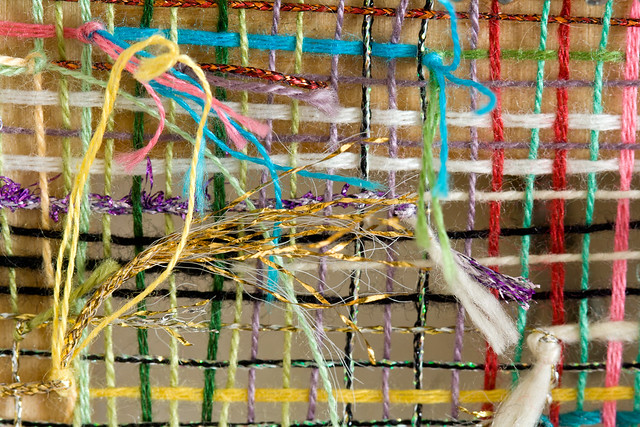The concept of realism in visual media is one that is very powerful in shaping our expectations of, and our judgments about, the media that we consume. The degree of perceived realism in a media text (a movie or a television show, for example) is closely tied with genre conventions and other classificatory schemes.
Different kinds of "realism" work in media to mask the constructed nature of all media forms, to try to make the story or information seem natural, "real" and unmediated. The power of these mechanisms to keep us, as viewers, from being able to think critically about the media texts is exactly why it is so absolutely essential to understand the concept of realism as we work to become more media literate. We need to be able to see the constructedness of all media--especially so-called realist media--to be critical media consumers.
Below, a quote from artist Georgia O'Keefe.
So, what *is* real? And what is realist when it comes to media? For this discussion, I'll limit myself to talking about film and television, and for purposes of analysis, I find it helpful to distinguish between two main types of realism: (1)
realism in nonfiction media (documentary forms, journalism/television news, and Reality TV in all of its manifestations), and (2)
dramatic or cinematic realism (in fiction films and television), a style of film language that became the hallmark of classical Hollywood cinema.
DOCUMENTARY REALISM
The producers of nonfiction or documentary forms of media base their arguments on claims of truth, actuality and authenticity. As viewers, we expect certain conventions of these kinds of media whether they are based upon the codes of journalism, on one end of the spectrum, or the norms of reality television programming, on the other end--with various types of documentary film falling in between.
What do we expect from these types of media forms, veiled in "truth," authenticity and objectivity (for the most part)? The norms for nonfiction film and television include unstaged action, “real” people (i.e., not actors playing a fictitious role), and naturally-occurring events.
However, despite the illusion of transparency of "truth" encoded into these forms of media, documentary realism in its style covers up the many levels of
selectivity and structuring that go into making the media text.
It's important to remember that if filmmakers or producers go out looking for a certain type of action or certain kinds of characters, they will usually find them. So the first step in the selectivity process is in
selecting a focus or story topic that fits into a preconceived notion of what will make an interesting or compelling story or film.
The next level of selectivity comes into play when the person(s) directing or operating the cameras or conducting the interviews
decide what to shoot and who to spotlight. Not all perspectives will be represented.
The next stage is evaluating the rough footage and deciding what to make of it. Most documentaries and news programs are indeed scripted, but in general
the scripting takes place *after* the footage and material are gathered, so that the script becomes a script for editing and structuring rather than a script for shooting. This is a significant way that Documentary Realism differs from dramatic realism.
Various models have developed over the years within each genre--television news, various types of documentaries, and subgenres of reality television--for styles of structuring this material to present it to an audience. All involve in their structuring:
a. the selective choices of
what is filmed, who is interviewed, what perspectives are chosen (and not chosen)
b. the heavy hand of
an editor, who selects, arranges, sequences, chooses to highlight or ignore certain information, and shapes the “real” information into a well-crafted presentation
c. the structuring of this “actuality” information and events into either
structures of narrative (stories) with characters, plots and other characteristics of good storytelling or into
informative or persuasive arguments (and these often use narrative as well)
Below, a clip from an extraordinary documentary film by Irish filmmaker Mark Cousins, called
The First Movie (2010), using lots of footage shot by Kurdish children in Northern Iraq. How does this film signify and encode realism? It is a good comparison and contrast with
The Color of Paradise, a fictional feature film (see below).
REALIST MODE OF REPRESENTATION IN FICTION FILM
The Realist mode dominated the
Classical Hollywood narrative style of visual storytelling; it has been supported by a set of conventions of cinematography, editing, mise-en-scene, plot structuring, etc. that work to create a smooth, unbroken narrative flow ("suture"). Everything that we as viewers see and hear is the result of strategic creative decisions involving photography, lighting, sound recording, editing, as well as other aspects of staging the production.
Even if they are clearly works of fiction and thus not "real" in the same documentary sense of embodying objective truth, authenticity or actuality, media that employ dramatic realism SEEM true because they encourage the viewer to believe in them and to emotionally identify with them. Realism creates a sense of
verisimilitude ("true-seemingness").
THe following clip is from
The Color of Paradise (1999), an Iranian feature film by Majid Majidi, a drama about the life of a blind little boy who returns home to his rural village from his special school for the blind in Tehran. In what ways is it realist?
There are, of course, many different approaches to realism in film (as in art and literature), and you will encounter discussions of magical realism, poetic realism, social realism, (as well as socialist realism!), and various types of neorealism in articles, books and film reviews. Here, we are only discussing realism at its most basic level.
Realism (both dramatic and documentary) encourages viewers to suspend disbelief, to forget they are watching a story constructed for them, and to get sucked in to the diegesis ("story world") of the film. We become passive spectators. We are invited to sit back and enjoy the ride, and not think about the way the film is constructed. We are not to do any work involving critical thinking; we are to be entertained or informed.
With both dramatic and documentary realism, we are encouraged to believe, if only for an hour or two, that a coherent and bounded world (in which these characters live and within the social and moral order of which they act) exists. We are not to be critical of the film or report, not to question (but to accept as natural) the ideological statements that it produces--statements about social and ethical values, gender roles, class, race and ethnic relationships, for example.
REALISM: REALLY?
In summary, these are the basic characteristics of classical film narrative having to do with the teller, the tale and the viewer. We can also question the degree to which these same mechanisms apply to documentary realism:
(1) The filmmaker's or producer's job is to make sure the mechanics of production and storytelling are invisible: to disguise his or her mediating presence as the constructor of the images and narrative.
(2) The text itself is a "closed" text, being self-contained and complete within itself: both the diegetic (story) world, and the plot.
(3) The audience is conditioned to be unconscious of their active participation in the construction of meaning, and in fact, the mechanisms of the text's construction work hard to keep the viewer from critically engaging but rather encourage the viewer to sit back and "enjoy the ride."



